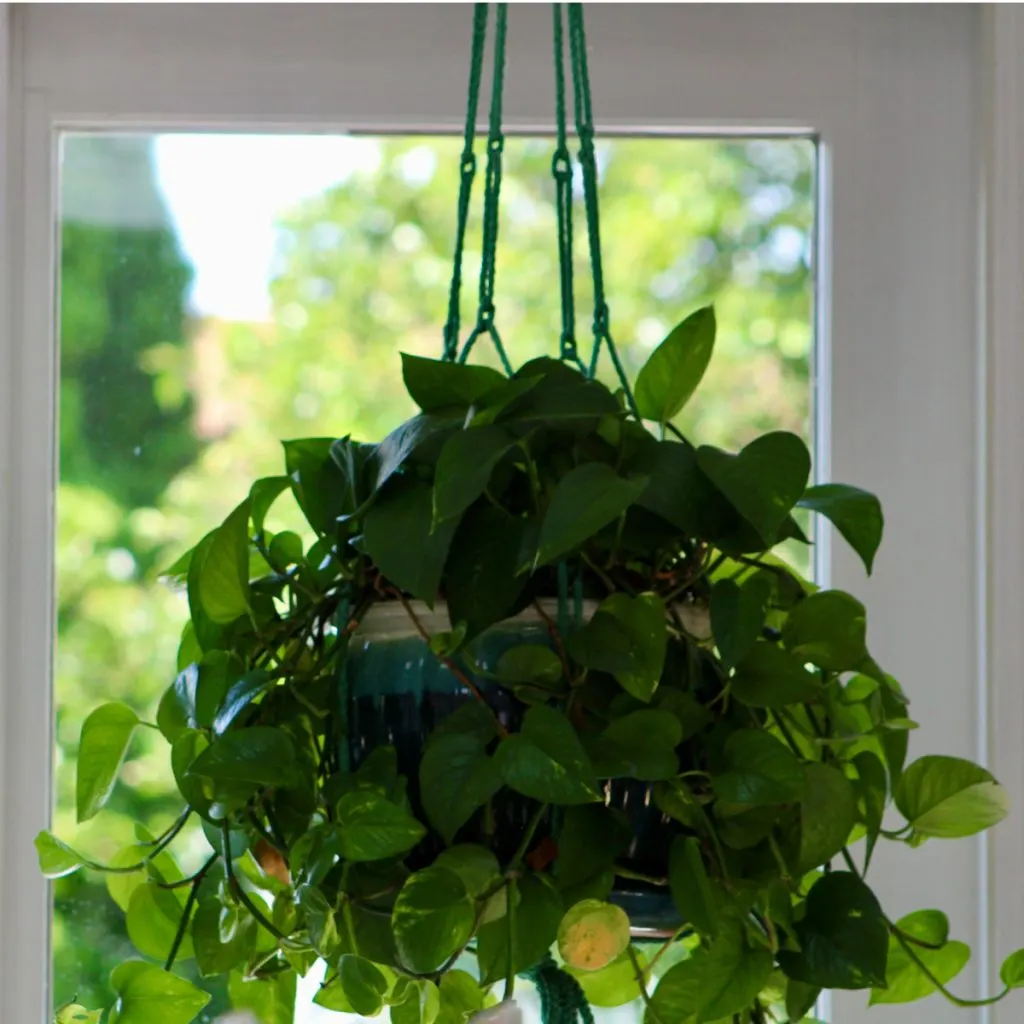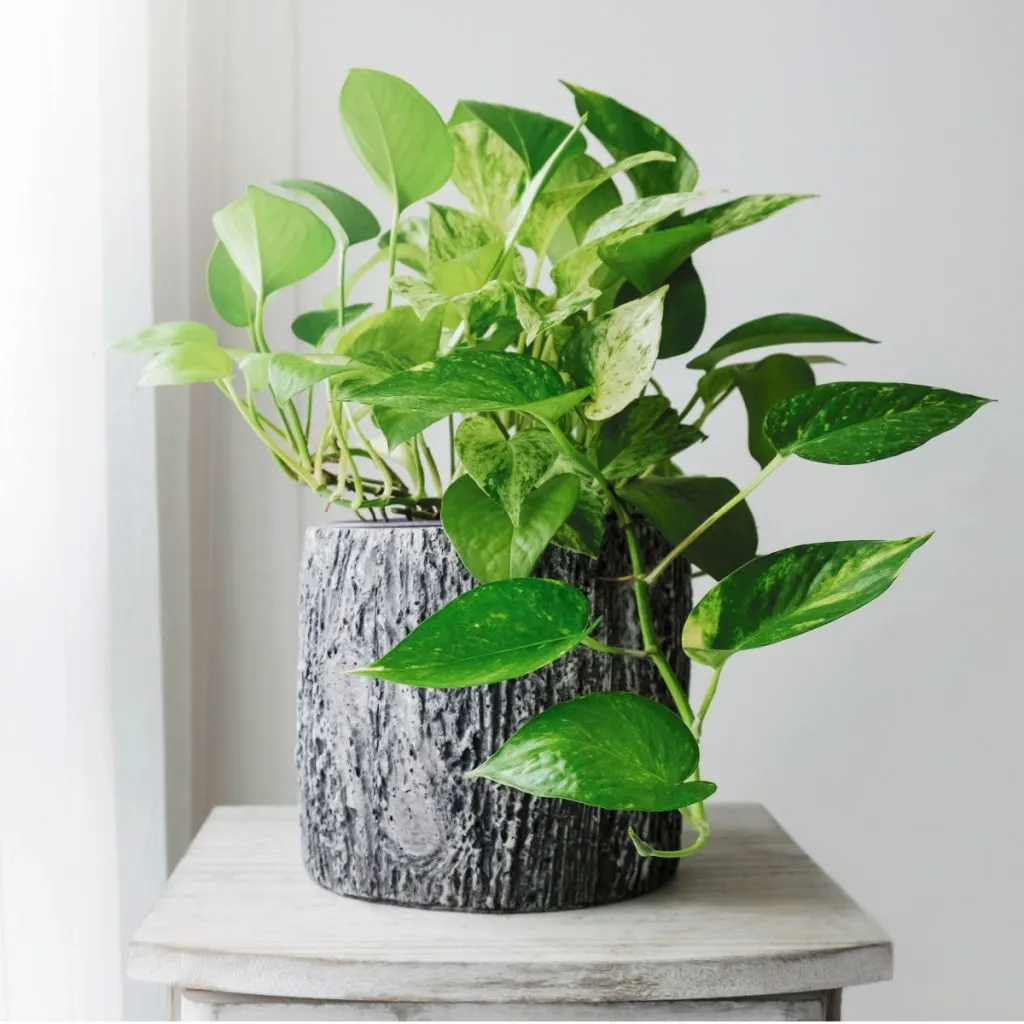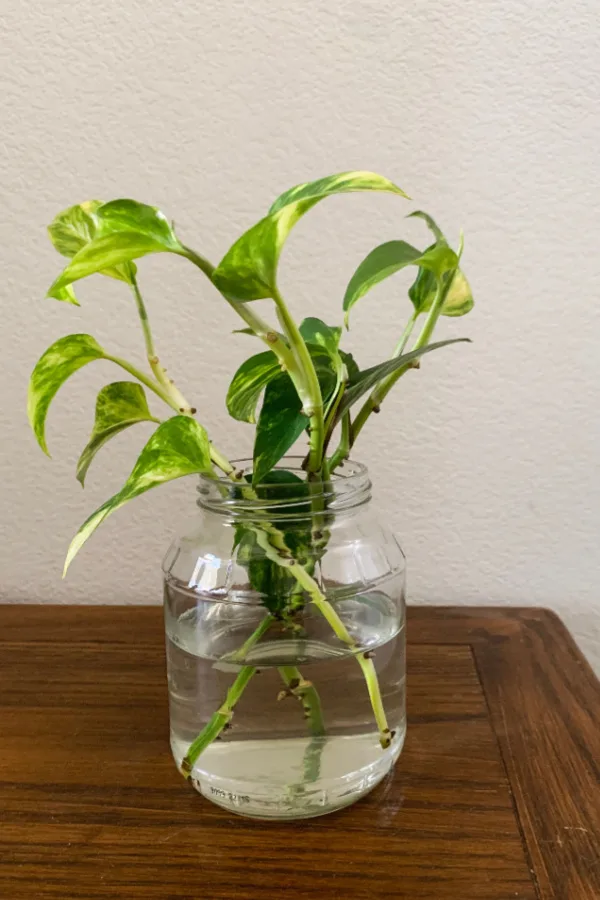Looking for the perfect houseplant that can grow with ease indoors all year around – or outdoors in the spring, summer and fall? Then you need to grow a pothos plant. Or perhaps – quite a few of them!
Pothos is one of the easiest and best plants to grow to add the perfect touch of greenery to your home – both indoors as a houseplant – or outside during the spring, summer and fall as a gorgeous hanging basket or container plant.
With its vibrant foliage and low-maintenance care requirements, it’s truly one of the easiest plants to grow and enjoy. Often known as Devil’s Ivy, pothos is prized for its long, trailing stems that fill with beautiful green and variegated leaves. But it’s also loved for its versatility and ability to survive in almost any situation and location!

The durable plant requires minimal attention, thrives in a variety of conditions, and is rarely affected by pests. In fact, even if you forget to water it for long stretches, the plant is more than capable of survival. One thing is for sure, it is nearly indestructible, even for those without a proverbial green thumb.
The Perfect Houseplant For Indoors Or Outdoors – Growing Pothos
So just how easy is it to care for pothos plants? Success really comes down to taking care of the most basic of needs. The good news? The needs are minimal and simple!
Pothos thrives in well-draining, ordinary potting soil. It’s not a heavy feeder, so you rarely if ever need to worry about fertilizing. And when it comes to watering, more is less with pothos. In fact, overwatering is one of the few things that can harm the plants.
Pothos only needs to be watered when the top inch of soil feels dry to the touch. As a houseplant, that is usually once every week to ten days. Outdoors as a hanging basket or container plant, it will usually require watering every few days. Wherever you grow it, it is important to make sure your container has drainage holes to prevent soggy soil.

As a tropical plant, Pothos thrives in temperatures between 60°F and 85°F. Of course, that makes it ideal for indoor growth, or for growing outdoors in the spring, summer and fall months. The only thing the plant cannot take is freezing temperatures.
Pothos naturally grows in tropical regions under shaded canopies, so it prefers filtered or indirect light. As a shade loving plant, the only real key is to place it in locations that do not receive direct sunlight.
The Versatility Of Pothos – The Perfect Houseplant!
What really makes pothos a star is its versatility as either a houseplant or as a patio plant. And when you throw in how easy it is to create new plants by simply taking cuttings from an existing plant, it takes almost nothing to have enough plants to grow it everywhere – all for free!
Indoors, Pothos is a fuss-free plant that can adapt to a wide range of environments. But during warm months, it really does thrive outside. And can it ever add a lush, tropical touch to a shaded area of your garden, patio or deck.
Pothos is perfect for filling outdoor pots, containers, and hanging baskets. Its trailing vines create a stunning effect, and when you consider how expensive hanging baskets can be, creating a few every year from pothos cuttings is a great way to save big on your gardening budget!

As for what it can handle outdoors, pothos grows well in growing zones 10 through 12 all year round, but in cooler climates, you can grow it outdoors as an annual and then bring it back inside when the cold temperatures arrive.
Because they are so easy to propagate, many gardeners opt to simply compost the outdoor plants and start fresh the following spring with more cuttings from their indoor pothos plants. And speaking of propagating – here is a look at just how easy the process is to create additional pothos plants!
Propagating Pothos – The Perfect Houseplant
Whether you want to expand your indoor collection or create new plants for outdoor use, propagating Pothos is a simple and straightforward process.
To start, all you need to do is select a healthy stem. Choose a stem with at least one leaf and a few inches of stem below it. Before cutting, make sure the stem includes nodes. Nodes are the small bumps where roots will form, and they appear on almost all stems.
When cutting a stem, cut at an angle just below a node. By cutting at an angle it will help the stem absorb water more easily. This is because it gives it a bit more surface area. Next, simply submerge the cut end and nodes in a clear glass of water. When doing this, always ensure that the leaf remains above the waterline.

Rooting The Cuttings – Pothos, The Perfect Houseplant
All that is left is to place the jar with cuttings in a spot with indirect sunlight. In just a few weeks, roots will begin to form and grow from the nodes. As soon as the roots are a few inches long, you can then transplant the cutting into potting soil. Affiliate Link: Back to the Roots 100% Organic Potting Mix
Again, pothos doesn’t require a nutrient dense soil to grow well. Ordinary potting soil will work just fine. The real key is to avoid overwatering and to make sure your new container has good drainage. By propagating in late winter, you can have mature plants ready for outdoor spaces by mid to late spring – adding gorgeous greenery for free.
Here is to growing pothos – the perfect houseplant! And for more easy houseplants to grow, check out our article: The Easiest Houseplants To Grow – 8 Plants Anyone Can Keep Alive.
This Is My Garden
Follow Our Facebook Page For Great Gardening Tips And Advice! This Is My Garden Facebook Page
This Is My Garden is a garden website created by gardeners, for gardeners. Jim and Mary Competti have been writing gardening, DIY and recipe articles and books and speaking for over 15 years from their 46 acre Ohio farm. They publish three articles every week, 52 weeks a year. Sign up today to follow via email, or follow along!
